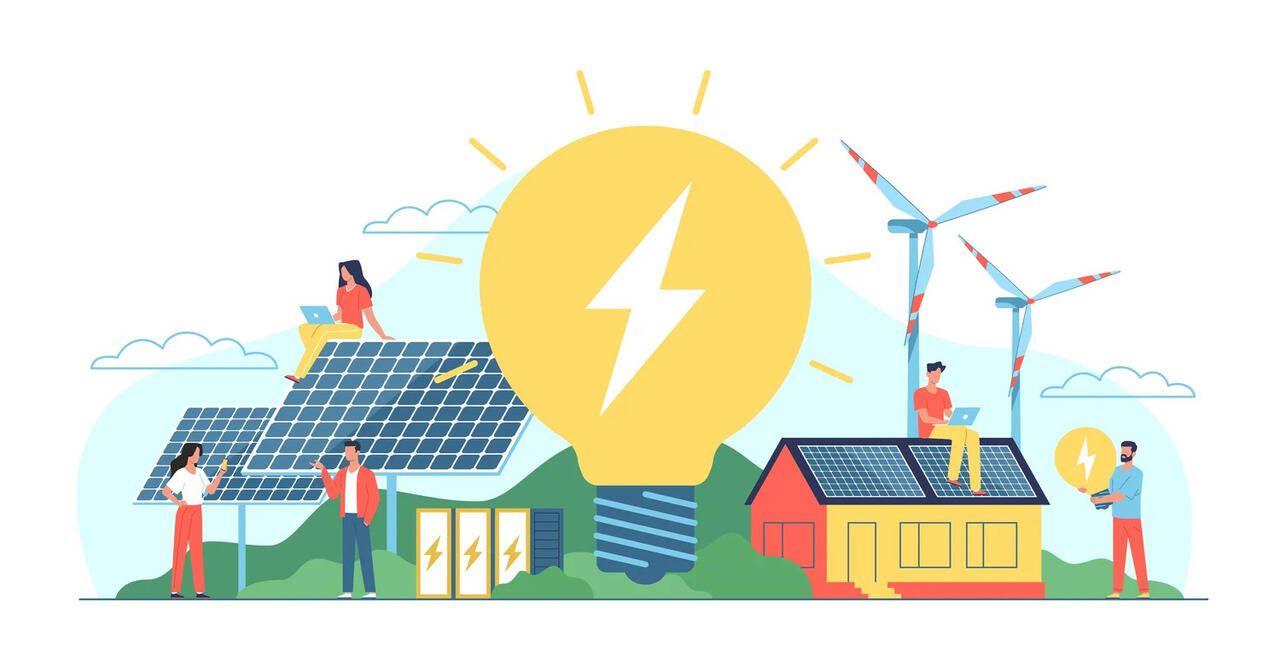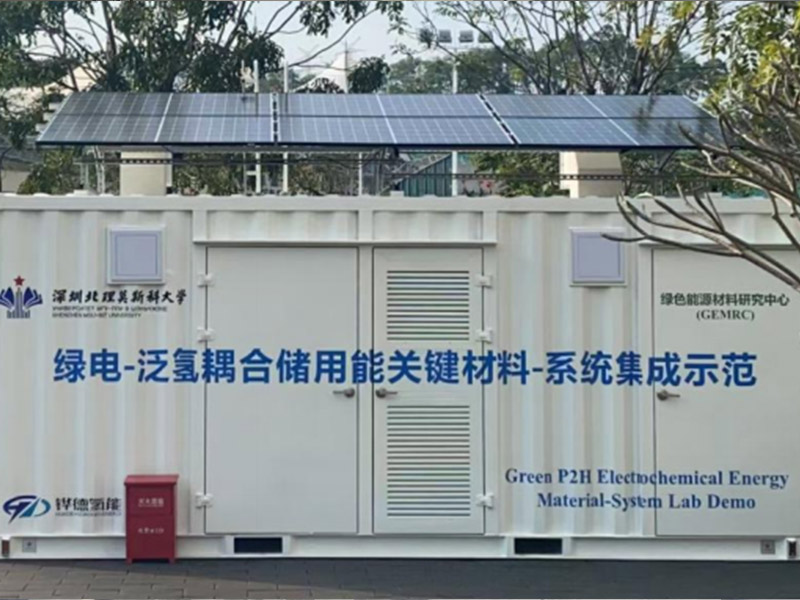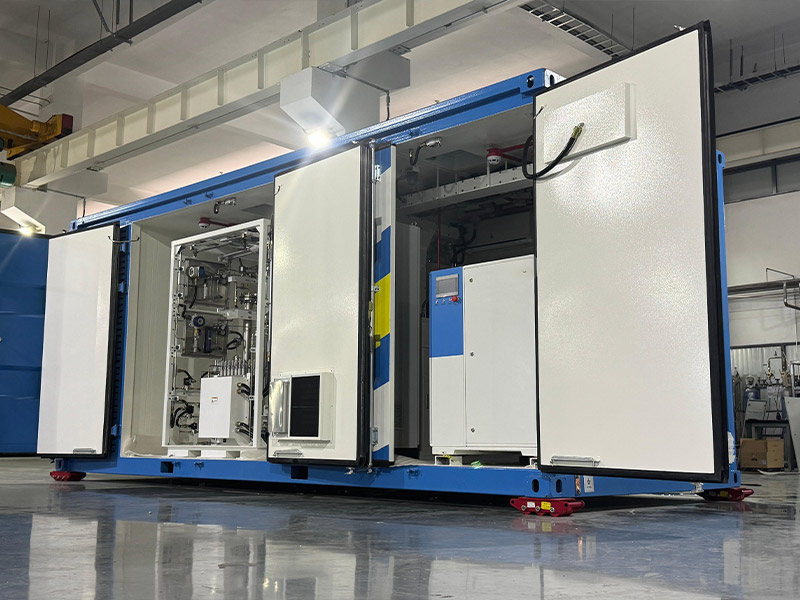As solar power continues to grow as a leading source of renewable energy, one major challenge remains: efficient energy storage. The sun doesn’t always shine, but our energy needs never stop. That’s where storage solutions come into play. From advanced batteries to innovative hydrogen systems, let’s explore the most efficient ways to store solar energy and how these technologies are transforming the way we power homes, businesses, and even entire cities.
Keypoints
l Lithium-ion batteries lead in short-term efficiency (90–95%) but degrade over time and lack long-duration capacity.
l Hydrogen storage excels in longevity and scalability, enabling seasonal energy storage for grids, industries, and off-grid homes.
l Thermal storage is ideal for heating applications, though it’s impractical for electricity storage without hybrid systems.
l Pumped hydro and flow batteries serve large-scale needs, offering high efficiency and stability for utilities and microgrids.
l Solar hydrogen combines versatility and sustainability, powering everything from homes to transport while emitting only water.
l The “best” method depends on use cases—batteries for daily needs, hydrogen for long-term resilience, and thermal for heating.
l Future advancements will bridge gaps, lowering costs and improving efficiency across all storage technologies.
Solar panels generate electricity only during daylight hours. Without a way to store this energy, surplus power generated during sunny periods goes to waste. Efficient storage allows you to:
Use solar energy at night or during cloudy days
Reduce reliance on grid electricity
Improve energy security and independence
Stabilize supply for off-grid living or remote locations
With storage, solar energy becomes not just clean—but reliable.

There are several methods to store solar energy, each with its own pros and cons. The efficiency, cost, and scalability of each method vary. Below are the most popular and promising storage technologies available today.
Currently, lithium-ion batteries are the most widely used and commercially available method for solar energy storage.
Advantages:
High round-trip efficiency (90–95%)
Compact and space-saving
Fast charging and discharging
Scalable for residential and commercial use
Limitations:
Limited lifespan (typically 10–15 years)
Cost can be high, especially for large capacity
Environmental concerns over mining and disposal
Lithium-ion batteries, such as Tesla Powerwall or LG Chem, are popular choices for home solar systems because they are plug-and-play, reliable, and energy-dense.
Solar-to-hydrogen storage involves using surplus solar electricity to power electrolyzers, which split water into hydrogen and oxygen. The hydrogen is then stored and later converted back into electricity via fuel cells or combustion.
Advantages:
Long-duration energy storage (days to months)
Hydrogen can be used for heating, electricity, or transportation
Zero emissions if produced with renewable energy
Scalable for large applications
Limitations:
Lower round-trip efficiency (~30–50%)
High cost of electrolyzers and storage tanks
Emerging technology, not yet widely adopted at home scale
While not as efficient as batteries in short-term use, hydrogen excels at seasonal storage—making it ideal for grids and homes in variable climates.
Thermal storage converts solar electricity into heat, which is stored in materials like water, molten salt, or rocks.
Advantages:
Excellent for heating and hot water
Affordable and low-maintenance
Efficient for direct thermal uses
Limitations:
Not suitable for storing electricity (unless coupled with thermoelectric systems)
Heat loss over long storage times
Less flexible than batteries or hydrogen
This method is efficient when the energy demand includes heating, such as in homes using solar thermal collectors and insulated water tanks.
This system uses excess solar electricity to pump water uphill. When energy is needed, water is released to flow downward and generate power through turbines.
Advantages:
High efficiency (70–80%)
Long lifespan (up to 50 years)
Ideal for utility-scale energy balancing
Limitations:
Requires specific geographic conditions (elevation difference)
Large upfront infrastructure investment
Not feasible for individual homes
Though not practical for residential use, pumped hydro is widely used by utilities to stabilize solar-rich grids.
Flow batteries store energy in liquid electrolytes held in external tanks. Their output capacity and storage time can be scaled independently.
Advantages:
Long cycle life (over 10,000 cycles)
Safe and non-flammable
Easily scalable
Limitations:
Lower energy density than lithium-ion
Expensive and bulky for residential use
Limited commercial availability
Vanadium redox flow batteries are leading this category, gaining attention for microgrids and future large-scale solar farms.
Efficiency depends on your goal. Are you looking for short-term, high-efficiency storage or long-duration seasonal resilience? Here's a breakdown:
|
Storage Method |
Round-Trip Efficiency |
Best Use Case |
|
Lithium-ion Battery |
90–95% |
Residential |
|
Hydrogen Storage |
30–50% |
Long-duration, seasonal storage |
|
Thermal Storage |
70–90% (heat) |
Space |
|
Pumped Hydro |
70– |
Utility-scale, grid stabilization |
|
Flow Batteries |
60–80% |
Scalable systems, microgrids |
For residential solar, lithium-ion is currently the most efficient and practical. But for future sustainability, combining solar panels with hydrogen energy storage offers unmatched potential in flexibility, cleanliness, and independence.
Solar hydrogen refers to the process of using solar energy to produce hydrogen gas—typically through electrolysis, which splits water into hydrogen and oxygen using electricity. When powered by solar panels, this method becomes a 100% clean and renewable energy cycle.
Key Benefits of Solar Hydrogen Storage:
High Energy Density: Hydrogen has a much higher energy density than lithium-ion batteries. It can store more energy per unit of weight, making it ideal for large-scale applications.
Long-Term Storage: Unlike batteries, which can lose charge over time, hydrogen can be stored for months or even seasons without degradation.
Scalability: Solar hydrogen can be scaled from residential to industrial levels, making it suitable for homes, factories, and even national power grids.
Solar Energy Collection: Photovoltaic (PV) panels capture sunlight and convert it into electricity.
Electrolysis Process: The electricity powers an electrolyzer, which splits water molecules into hydrogen and oxygen.
Hydrogen Storage: The hydrogen is compressed or liquefied and stored in tanks for later use.
Energy Conversion: When energy is needed, hydrogen can be converted back into electricity using fuel cells, or burned cleanly to generate heat.
As we aim for decarbonization across all energy-consuming sectors, hydrogen produced from solar power stands out. It doesn’t just store electricity—it can also be used directly for heating homes, fueling vehicles, and powering industry. This versatility gives it a major advantage over other storage technologies.
In fact, countries like Germany, Japan, and Australia are investing heavily in solar hydrogen as a strategic path to achieve energy independence and meet climate goals.
As a company focused on solar hydrogen technology, we provide integrated solutions that maximize energy efficiency and sustainability. From high-efficiency electrolyzers to smart storage systems, our products help businesses and households unlock the full potential of solar power.
The most efficient way to store solar energy depends on your energy goals, budget, and location. For quick, reliable access, lithium-ion batteries dominate the market. For long-term sustainability, hydrogen storage—especially when paired with solar panels—offers a powerful alternative that extends the reach of renewable energy beyond the limits of the sun’s daily cycle.
As technology advances and costs drop, we can expect even more efficient and integrated solutions to emerge, bringing us closer to a fully renewable, reliable, and self-sufficient energy future.
Lithium-ion batteries (90–95% efficiency) are currently the best for short-term residential storage, while hydrogen is ideal for long-term/seasonal needs.
2. Can hydrogen store solar energy better than batteries?
For long durations (weeks/months), yes—hydrogen doesn’t degrade like batteries, but it’s less efficient (30–50%) for daily use.
3. Is thermal storage a good option for solar energy?
Yes, for heating (70–90% efficient), but it can’t store electricity unless paired with other systems.
4. Why choose pumped hydro or flow batteries?
Pumped hydro suits utility-scale grids (70–80% efficiency), while flow batteries excel in microgrids with long lifespans (10,000+ cycles).
5. How does solar hydrogen storage work?
Solar panels power electrolyzers to split water into hydrogen, which is stored and later converted back to electricity or heat via fuel cells.
6. What’s the biggest drawback of lithium-ion batteries?
Limited lifespan (10–15 years) and environmental concerns about mining/disposal.
7. Will hydrogen storage become mainstream for homes?
As electrolyzer costs drop, yes—especially in off-grid areas or regions investing in hydrogen infrastructure.


